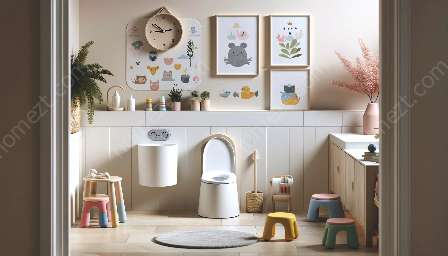Are you wondering if your child is ready for potty training? Understanding the signs of potty training readiness can make the transition smoother and more successful. Potty training is an important milestone in every child's life, and it's essential to identify the right time to start this process.
Signs of Potty Training Readiness:
Every child is different, and readiness for potty training can vary from one child to another. However, there are some common signs that indicate your child may be ready to start potty training:
- 1. Showing interest in the bathroom: If your child is showing curiosity about the bathroom, such as following you to the restroom or asking questions about it, this could be a sign of readiness.
- 2. Ability to pull down and pull up clothing: If your child can pull down their pants and pull them back up, it indicates a level of physical readiness for using the potty.
- 3. Staying dry for longer periods: If your child's diaper stays dry for a couple of hours or wakes up from naps with a dry diaper, it shows that their bladder control is improving.
- 4. Verbal and non-verbal communication: Your child may start expressing their need to go to the bathroom or make specific gestures when they need to go.
- 5. Discomfort with dirty diapers: If your child shows signs of discomfort when wearing a soiled diaper, it may be a good time to start potty training.
Tips for Successful Potty Training:
Once you've identified the signs of readiness, there are several tips to ensure a smooth and successful potty training journey:
- 1. Prepare the environment: Set up a potty chair or seat in the bathroom and encourage your child to become familiar with it.
- 2. Demonstrate the process: Show your child how to use the potty by letting them watch you or older siblings using the toilet.
- 3. Encourage practice: Allow your child to practice sitting on the potty, even if they don't go, to get used to the routine.
- 4. Use positive reinforcement: Praise and encouragement go a long way in motivating your child during the potty training process.
- 5. Be patient and understanding: Accidents are normal during potty training, so it's important to remain patient and understanding throughout the process.
Integrating Potty Training with Nursery & Playroom:
Potty training readiness can be integrated into the nursery and playroom environment to create a supportive and encouraging atmosphere for your child. Here are some ways to incorporate potty training readiness into these spaces:
- Designate a potty area: Create a designated space in the bathroom or the nursery for the potty chair or seat, making it accessible and inviting for your child.
- Use educational resources: Introduce books, toys, or games about potty training in the playroom to familiarize your child with the concept in a fun and engaging way.
- Positive reinforcement corner: Set up a special corner in the playroom where your child can receive praise or rewards for successful potty use, reinforcing positive behavior.
- Communicate with caregivers: If your child attends a nursery or daycare, communicate with the caregivers about the potty training readiness signs and strategies to ensure consistency across different environments.


